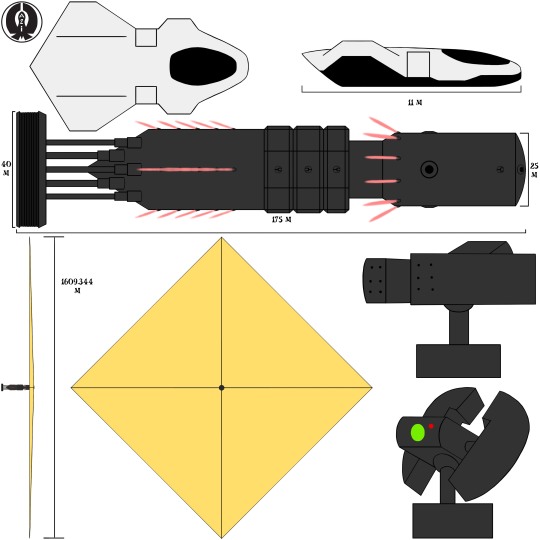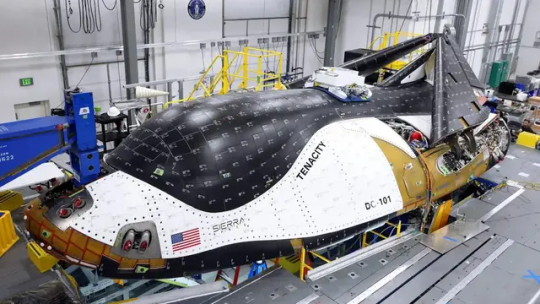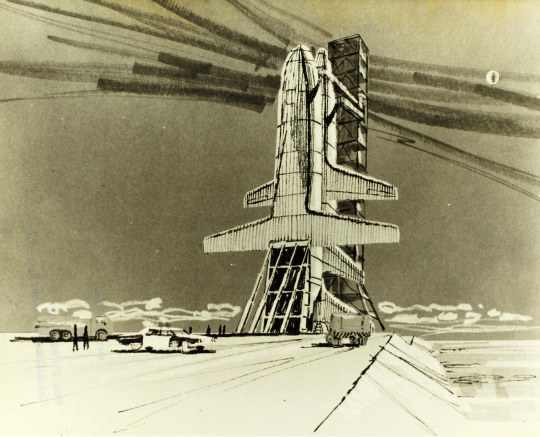#space plane
Explore tagged Tumblr posts
Text
Proposal: Dyna-Soar/Little Joe II Suborbital Flight Test Program

Artist concept of Little Joe II/Dyna-Soar concept. (Convair)
"The X-20 Dyna-Soar program is often remembered as one of the biggest lost opportunities in the history of manned space flight. Evolving from the WS-464L Program, Dyna-Soar had great potential for use as a military space platform as well as civilian science laboratory. Unlike the earlier Mercury, Gemini and Apollo capsules that were single-use vehicles returning to earth under a parachute system, the X-20 was a winged vehicle, capable of landing on select runways, then refur- bished and utilized again.

Initial flight testing of the Dyna-Soar had the vehicle dropped from a modified B-52C, 53-0399, carrier aircraft to test atmospheric handling qualities and landing techniques. The USAF selected Ed wards AFB, CA, and White Sands Missile Range, NM, due to their natural runway surfaces. (AFTC History Office)
The initial phase of the X-20 flight test program had the vehicle dropped from high altitudes from a B-52C mothership to test atmospheric aerodynamic handing of the vehicle, as well as develop landing techniques at Edwards AFB, CA. The second phase of testing involved sending the X-20 on unmanned and manned orbital spaceflight test mis- sions powered by a Titan III rocket booster which left a large gap in the standard progression of flight testing. The Convair Division of General Dynam- ics proposed making suborbital test flights using a Little Joe II booster.

The Little Joe II was a clustered, solid-propellant rocket booster designed as unguided and controllable versions. The vehicle could accommodate one to seven, 40-inch diameter, 100,000-lb thrust, Aerojet Algol 1D solid rocket mo- tors. With minor modifications the im proved launch vehicle (IPLV) could ac commodate the more advanced 44-inch diameter Algol IIA motors.
Little Joe II had the reputation as a reliable work- horse of the early manned space program, testing Mercury and Apollo escape and recovery systems from various launch locations. The Little Joe II booster was a versatile rocket with capabilities not found on many systems of the day and could be adapted and configured for several different flight profiles.

This detailed dimensional drawing shows some of the modifications required for the Little Joe il booster in order to carry the Dyna-Soar test vehicle. In addition to the upper adapter fairing, the booster required larger aerodynamic stabilizing fins to compensate for the larger payload. (Convair)
Convair proposed making test flights of the Dyna- Soar/Little Joe II combination on an overland range between Edwards AFB, CA and the White Sands Missile Range in New Mexico. Launching from Edwards AFB provided a lakebed in case of an aborted launch . and emergency landing. Range instrumentation was already in place at both sites, keeping the range support cost to a minimum.


Two different versions of the modified Little Joe II booster
The Dyna-Soar test vehicle would be mounted atop the Little Joe II booster with a two-part transition fairing, gloved over the X-20 to minimize drag and would be jettisoned prior to separation. This variation of the Little Joe II booster required movable aerodynamic fins, larger than those used on standard Little Joe II launches.

A Boeing/USAF X-20 Dyan-Soar is boosted skyward for a suborbital test flight from Edwards AFB, CA towards White Sands Missile Range, NM, aboard a Convair Little Joe II. The larger stabilizing fins and aerodynamic fair- ing around the Dyna-Soar are noteworthy. (Convair)
Utilizing a standard Little Joe II booster, the X-20 could be propelled to a maximum speed of 10,000 fps (approximately 6,800 mph) at an altitude near 170,000 feet. With the improved Little Joe II launch vehi- cle, those figures would rise to a speed of 15,000 fps (approximately 10,200 mph) and an altitude near 200,000 feet. The entire flight covered approximately 582 nautical miles, with the booster impacting the desert floor just over halfway through the flight. The Dyna-Soar test vehicle would experience considerable aerodynamic heating during the reentry phase with the final landing on the alkali flats of the White Sands Missile Range.

The Dyna-Soar suborbital program required a minimum of five test flights: two unmanned flights utilizing the existing automatic guidance, and three manned flights. Convair projected the total price of the five-flight test program at $12.2 million, considerably less than the projected $18 million per flight for a Titan III booster (figures are in FY 1965 dollars)."
AFMC History & Museums Program HQ AFMC/HO 4225 Logistics Ave, RM S133-Wright-Patterson AFB 45433-5006-DSN: 713-1797
source
NASA ID: 63-Little Joe II-3
SDASM Archives: 86914210, 47209426
#Boeing X-20 Dyna-Soar#Boeing X-20 Dynasoar#Boeing X-20#X-20#Dynamic Soarer#Dyna-Soar#Dynasoar#X-Plane#Space Plane#Spacecraft#Little Joe II#Rocket#NASA#United States Air Force#U.S. Air Force#US Air Force#USAF#White Sands LC-36#LC-36#White Sands Missile Range#WSMR#White Sands#New Mexico#Cancelled#Cancelled Mission#Cancelled Missions#1960s#undated#my post
48 notes
·
View notes
Text




Boeing/USAF BETA-II spaceplane TSTO Concept
#Boeing#USAF#United States Air Force#Concept Art#Space Plane#TSTO Concept#Sci-Fi#Cancelled Project#Mecha#Spaceship
65 notes
·
View notes
Text

Space Shuttle by mnjedi
#Digital art#Space Shuttle#space plane#spacecraft#Shuttle#Shuttle landing#Space shuttle art#Orbiter#aerospace#NASA
63 notes
·
View notes
Text

Haolong cargo space plane unveiled at Zhuhai Airshow (2024)
7 notes
·
View notes
Text
youtube



2 notes
·
View notes
Text

I've really become obsessed with the Orion Drive spacecraft concept and continue to develop different ideas for it. This one is envisioned as a more personal spacecraft for a character for my Centauri universe which in my mind is evolving into an anthology of sorts. I call it the Wabash Cannonball as I imagine it traveling through space like a powerful 19th century train.
Along with being relatively smaller than the other Orion Drive ships I designed, I gave this ship three unique features. The first is that it uses a system called "dusty plasma radiators" for heat regulation. It works using conductive plasma manipulated by magnetic fields to heat up dust particles and cycle them out of the ship and back in. This adds to the steam engine vibe I was going for this ship. The second is it's equipped with a diffracting solar sail that's a mile in diameter for initial movement to a safe distance (aided by powerful laser arrays on planetary surfaces) before retracting and letting the Orion drive take over. Is is also unfurled to capture sunlight of an approaching star during it's deceleration procedure. The third is that habitable module at the front of the craft is detachable and equipped with fusion rockets in case of emergencies.
Other features are two space planes for planetary entry, RCS thrusters for maneuvering, several onboard maintenance drones for making repairs inside and outside the ship, and 16 turrets with projectile and laser weapon system for self defense.
I'm going to try to depict the character I imagine piloting this ship next as I already finished my Thanksgiving piece (just waiting for Thanksgiving day).
As always, comments and critiques are welcome.
#spaceship#spacecraft#space exploration#science fiction#scifi#solar sail#orion drive#concept art#conceptual#concept#concept design#nuclear power#nuclear#turret#my art#digital art#digital color#digital illustration#space plane#radiator#starship#Wabash cannonball
7 notes
·
View notes
Text
Unveiling Enigmatic Objects in Earth's Orbit: China's Mysterious Space Plane
AI art rendering. Image: STM Daily News China’s Shenlong robotic space plane has added another layer of mystery to its mission. Shortly after its third launch, the space plane deployed six enigmatic objects into Earth’s orbit, captivating the attention of amateur spacecraft trackers worldwide. These objects, designated as OBJECT A, B, C, D, E, and F, have been closely observed, and intriguing…

View On WordPress
0 notes
Text
If you don't know what dream chaser is then you probably should. Because it's a reusable space plane and its amazing and it's backed by NASA and its almost ready to fly and did I mention it's a frelling REUSABLE SPACE PLANE!?

Sierra Space's first Dream Chaser space plane, "Tenacity." (Image credit: Sierra Space)
1 note
·
View note
Text

"In this Douglas Aircraft Company artist’s concept, a Saturn C-1 (Saturn I) booster is depicted at the moment of first stage jettison and staging, while delivering an X-20/Dyna-Soar into earth orbit.
Note the blowout panels of the second (S-IV) stage.
Beautiful artwork by Don Charle or Ron Simpson."
Posted on Flickr by Mike Ace.
Date: 1961
Douglas Aircraft Co. photo: 353247
#Boeing X-20 Dyna-Soar#Boeing X-20 Dynasoar#Boeing X-20#X-20#Dynamic Soarer#Dyna-Soar#Dynasoar#X-Plane#Space Plane#Spacecraft#Cancelled#Saturn I#Rocket#NASA#United States Air Force#U.S. Air Force#US Air Force#USAF#undated#1961#my post
50 notes
·
View notes
Text

It is said that the Universal Greeting is so silly, so goofy, so utterly derpy that no bad guy, self-respecting or not, would be able to say it.
#what do u mean the ewoks will get crushed#yoda lifts space planes on a regular basis#starscream#skyfire#skystar#g1#maccadam
2K notes
·
View notes
Text

NASA 905 carrying the shuttle Endeavour climbs out of Moffett Federal Airfield, Ca
#NASA#SCA 905#Boeing#747#Space shuttle#Endeavour#OV-105#Orbiter#spacecraft#space plane#aerospace#aviation#shuttle
33 notes
·
View notes
Photo
Too many wings.
...what?
Too. Many. Wings. You got wings on the external tank for chrissake.
External... what? That's Stage One. It has rockets. You know--
Not anymore. Budget cuts.
Wait, so we're not flying the REUSABLE Stage One back--
It's an external tank now. Full of cryogenics. It's just gonna fuel the orbiter's main engines then we eject it. Disposable.
Wait wait wait... that's nuts. The orbiter doesn't have nearly enough thrust! What game are you playing here? What did you sell them?!
Oh buddy. You ready for this?
TELL ME
Solid. Rocket. Boosters.
FUCK NO that's lunacy.
FUCK YES

Space shuttle concept art.
182 notes
·
View notes
Text
They both reached for the gun phaser!
Inspired by @peachviz
#ds9#benjamin sisko#captain benjamin sisko#Captain sisko#in the pale moonlight#ds9 edit#elim garak#garak#ds9 garak#guys editing on a laptop is impossible i miss my pc#im blaming the fact i made this on a laptop that sounds like a jet plane taking off for how weird the text is#once i sit down and actually make an EDIT its so over for you hoes#deep space nine#star trek#star trek edit#premiere pro#this is probably the best episode of star trek like...period#me when i b*mb a politician#THATS A JOKE FBI#FBI ITS A REF TO THE EPISODE#FBI PLEASE#my edit#edits i love#AndromedaEdit
971 notes
·
View notes
